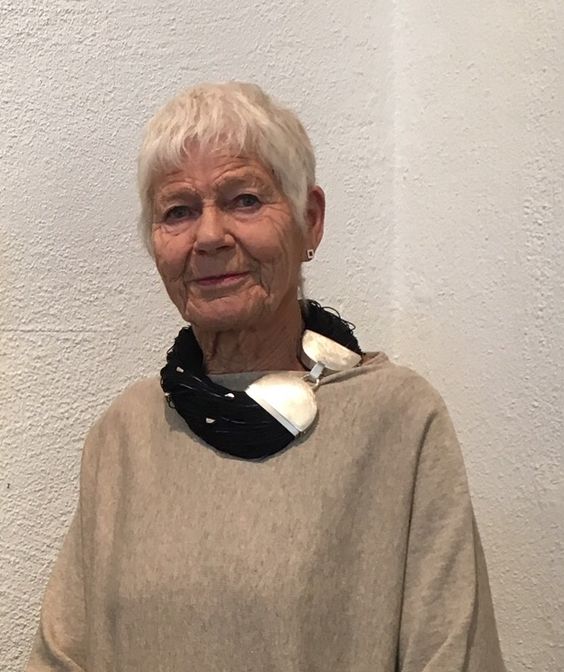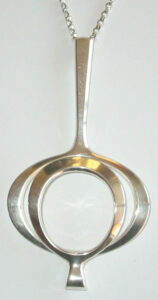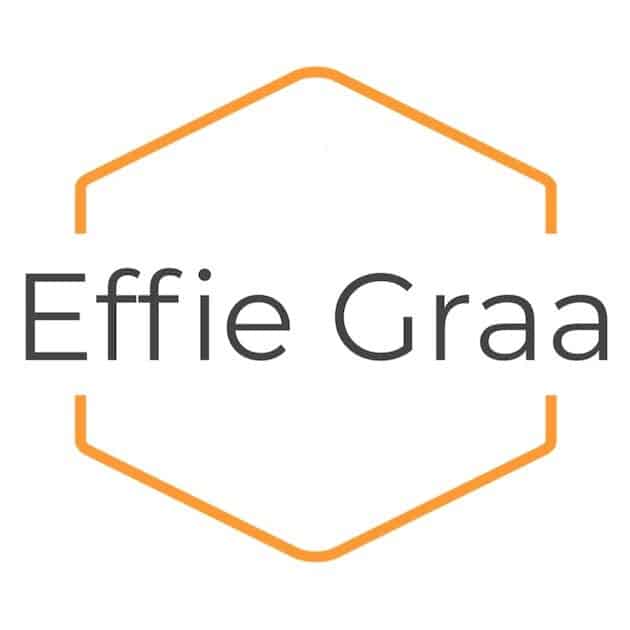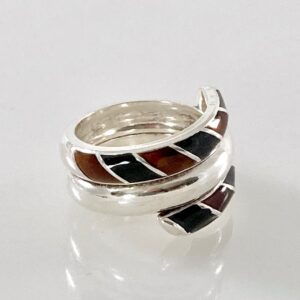
Toril Bjorg (b. 1944)
Toril Bjorg and textile techniques in silver jewelryThe Norwegian silver smith and jewelry artist Toril Bjorg is known all over the world for her use of textile techniques in silver jewelry making. Working through knitting and crocheting silver thread, she has ended up using a special spiral technique. Thin thread is first made into long spirals and then put together to form flexible bracelets that can be rolled into different shapes, or large collars that sweep around the neck and brings forth the bearer. The result is soft stretchable sculpture like pieces of silver jewelry with references to old lace, ancient armory and ladies dresses from the Renaissance.
After graduating from the National College of Applied Arts & Crafts in Oslo, 1968, Toril Bjorg started her own workshop. Doing so she was following up a movement of mostly female Norwegian silver smiths, such as Tone Vigeland in 1961 and Gine Sommerfelt in 1964, working in small private workshops hand making jewelry with an emphasis on the free artistic expression. Work for David-AndersenThe jewelry of Toril Bjorg was first presented to a broader public through her designs for the David-Andersen company, Oslo. Early in her career she won several awards and was judged a promising and interesting designer. In 1972 she joined the design team of the at the time leading Norwegian silver company David-Andersen. As the youngest of the two new designers, the other one being Erik Blom, she contributed in creating a new David-Andersen style with the characteristic look of the 1970s. The idea of these pieces was – more than had been the case in the 1960s, to let the forms bring forth the lustre of the silver. Another trend, or source of inspiration, was the retrospective look at the Jugend/Art Nouveau style, combining the generous shapes with the brighter, new and modern colors of the 1970s. Together with Erik Blom, Toril Bjorg made series of jewelry with brightly colored enamel in green, orange and violet. While Blom left David-Andersen already 1975, Toril Bjorg stayed until 1979. Her studio jewelry from the same period has an informal and intimate character, traditional Norwegian “Sølje jewelry” in modern interpretation for casual everyday use, combining silver with colorful silk cord and pieces of glass found by the sea. Studio worksAfter post-graduate sculpture studies 1981/82 at the National College of Applied Arts & Crafts, Oslo, Toril Bjorg moved in the direction of larger studio made jewelry. In 1993 she held her first international solo exhibition. It took place at the renowned ‘Electrum’ gallery in London, the same gallery that gave Tone Vigeland a great international break through in 1981. The jewerly of Toril Bjorg has also been exhibited in group exhibitions in countries such as Japan, Germany, Italy, United Kingdom and in the US, Mobilia Gallery, Cambridge. |

Silver.

Silver.

Silver.

Silver.
Table of Contents
Toggle
